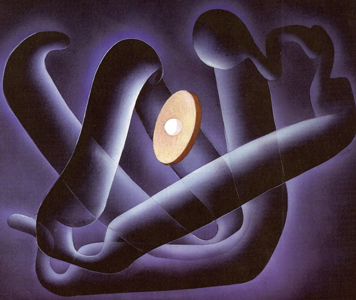Outreach and Education 
RCSB PDB wants to learn more about Molecule of the Month readers worldwide. Please take this brief survey and be entered into a drawing for a signed copy of The Machinery of Life by David Goodsell.
New Video: Penicillin and Antibiotic Resistance
Since its discovery in 1928, penicillin and penicillin-related antibiotics helped save countless lives from bacterial infections. However, in the face of overuse and misuse of antibiotics, bacteria evolved resistance mechanisms that allow them to proliferate even in the presence of the newest antibiotics.
Superbugs! How Bacteria Evolve Resistance to Antibiotics
Antibiotics are one of the miracles of modern medicine, allowing us to fight infection by pathogenic bacteria. Antibiotics attack essential molecular machines in bacteria, stopping or slowing their action and ultimately killing the cell.
Superbugs such as MRSA (Methicillin-resistant Staphylococcus Aureus), have found ways to evade almost all current antibiotics.
New Online Curriculum: The PDB Pipeline & Data Archiving
Drawing from their collective knowledge as structural biologists, data scientists, educators, developers and managers of data resources, the Research Collaboratory for Structural Bioinformatics (RCSB) team has created an open access, modular educational curriculum covering concepts, approaches and requirements for developing and managing the data pipeline for a curated public archive of biological experimental data. The online curriculum, available as part of the RCSB PDB-101 education website and also accessible directly via edsb.rcsb.org, makes best practices recommendations for data resource development and management.
The intended audience includes scientists, who can use the materials for self-instruction, as well as librarians and information specialists, who can use the materials to develop training services for students, scientists, and staff. In addition, the curriculum is intended to help accelerate development of new data archives for experimental methods used in Integrative Structural Biology.
The curriculum is composed of eight modules that can be studied separately or as a complete online course. Materials include professionally produced videos, powerpoint slides, and exercises that guide students step-by-step to design, create, and query their own data archive. This education development project was funded by National Institutes of Health National Library of Medicine as part of the NIH Big Data to Knowledge (BD2K) Initiative (R25 LM012286).

Molecular Landscapes and the Art of Science
Brain – wider than the sky exhibits artwork about the brain for all ages at the Calouste Gulbenkian Museum in Lisbon. Available until June 10th, Brain – wider than the sky features video installations on the brain, interactive sensory exhibits, artworks and digital games to showcase the themes of the exhibition display. Can't make the exhibit? Visit PDB-101 for a new digital gallery of Goodsell's SciArt work. New watercolor paintings Excitatory and Inhibitory Synapses by Molecule of the Month creator David Goodsell are on display.
Can't make the exhibit? Goodsell's molecular landscapes are now available from PDB-101 in a special SciArt Digital Archive. These watercolor paintings integrate information from structural biology, microscopy and biophysics to simulate detailed views of the molecular structure of living cells. These illustrations are free for use under CC-BY-4.0 license. Acknowledgement should be given as indicated for each illustration.

The Goodsell Gallery accompanies PDB-101's Irving Geis Digital Archive. Geis (1908-1997) was a gifted artist who helped illuminate the field of structural biology with his iconic images of DNA, hemoglobin, and other important macromolecules. Through a collaboration with the Howard Hughes Medical Institute (HHMI), which owns the Geis Archives, PDB-101 displays many of Geis' illustrations in the context of the corresponding PDB structures and related molecular information. Through this archive, these images are available for download for noncommercial usage.

|

|
|
Myoglobin Fold (1987). Used with permission from the Howard Hughes Medical Institute (www.hhmi.org). All rights reserved. |
2018 FASEB BioArt Winner
PDB-101's animation of the calcium pump moving ions across a cell membrane was among the 2018 Winners of FASEB's BioArt Competition. This year’s 10 winning images and three videos represent a wide range of biomedical research, from a Human Hand Showing Carpal Tunnel Tendons and Palm Muscles to a Video of Arabidopsis flowers forming at tip of stem.
The calcium pump moves ions across cell membranes allowing the synchronized contraction of muscle cells. The Calcium Pump animation was created by Maria Voigt and is an excerpt from the introductory What is a Protein? video (also the subject of the 2019 calendar). PDB-101 hosts a collection of videos and animations on a variety of topics.

